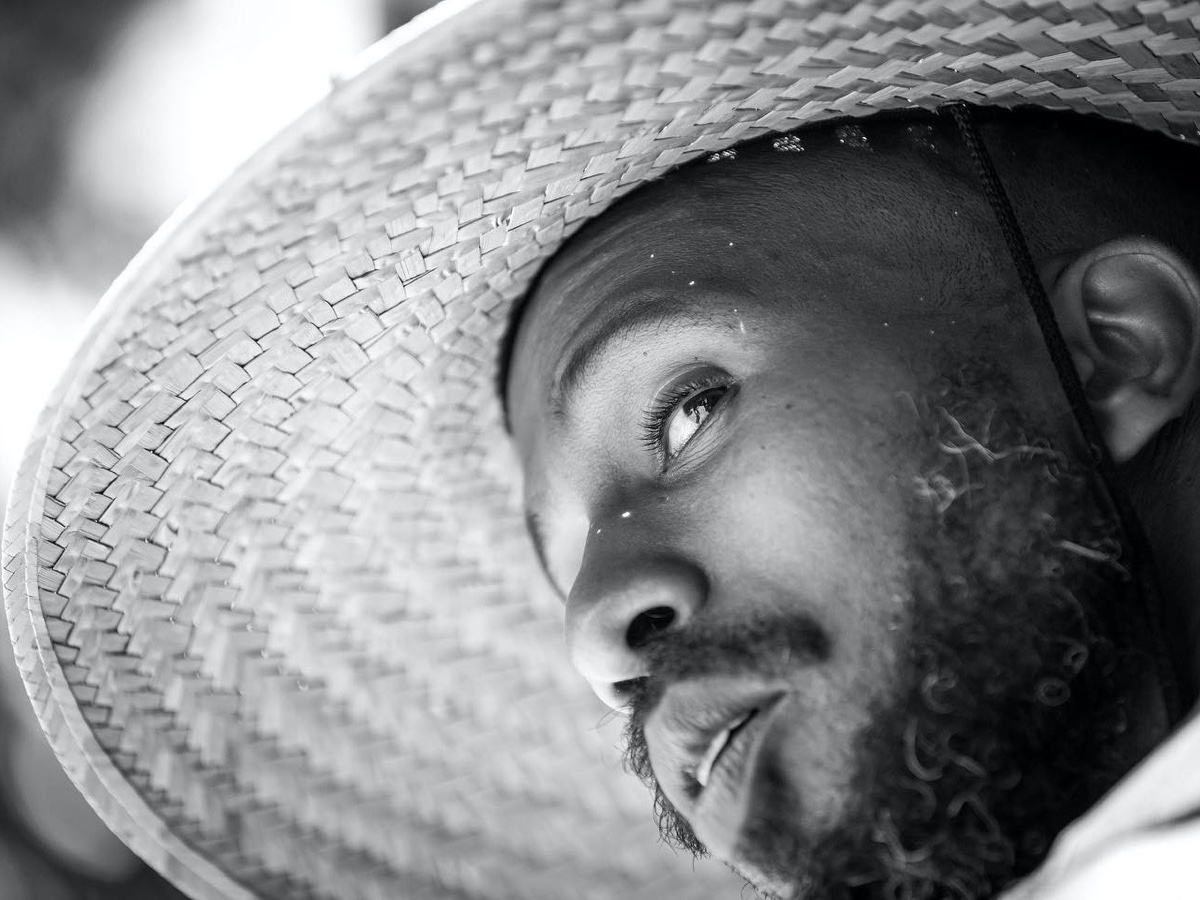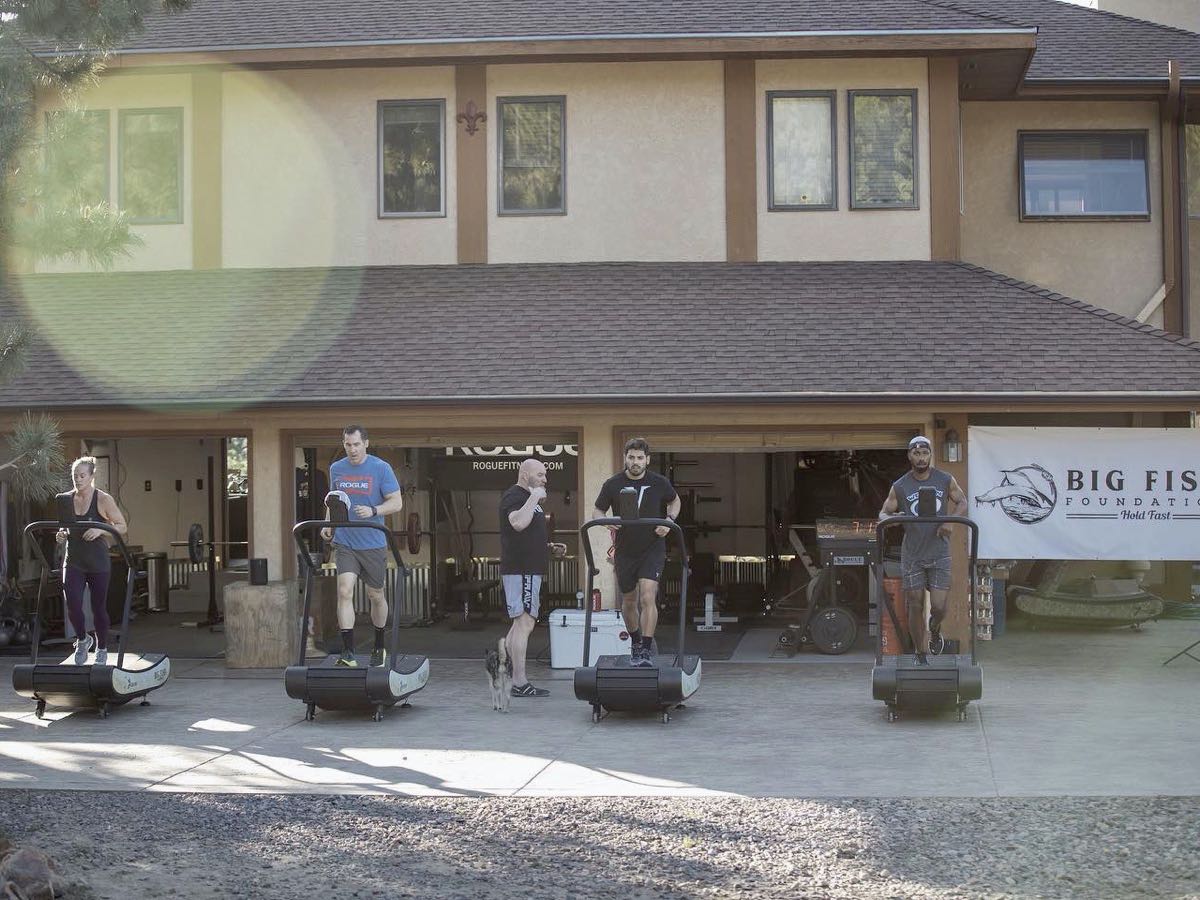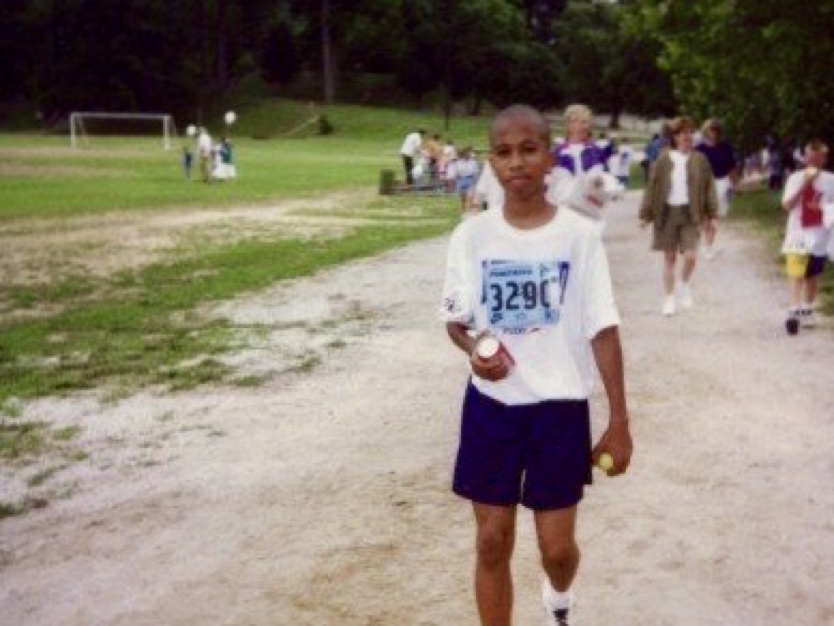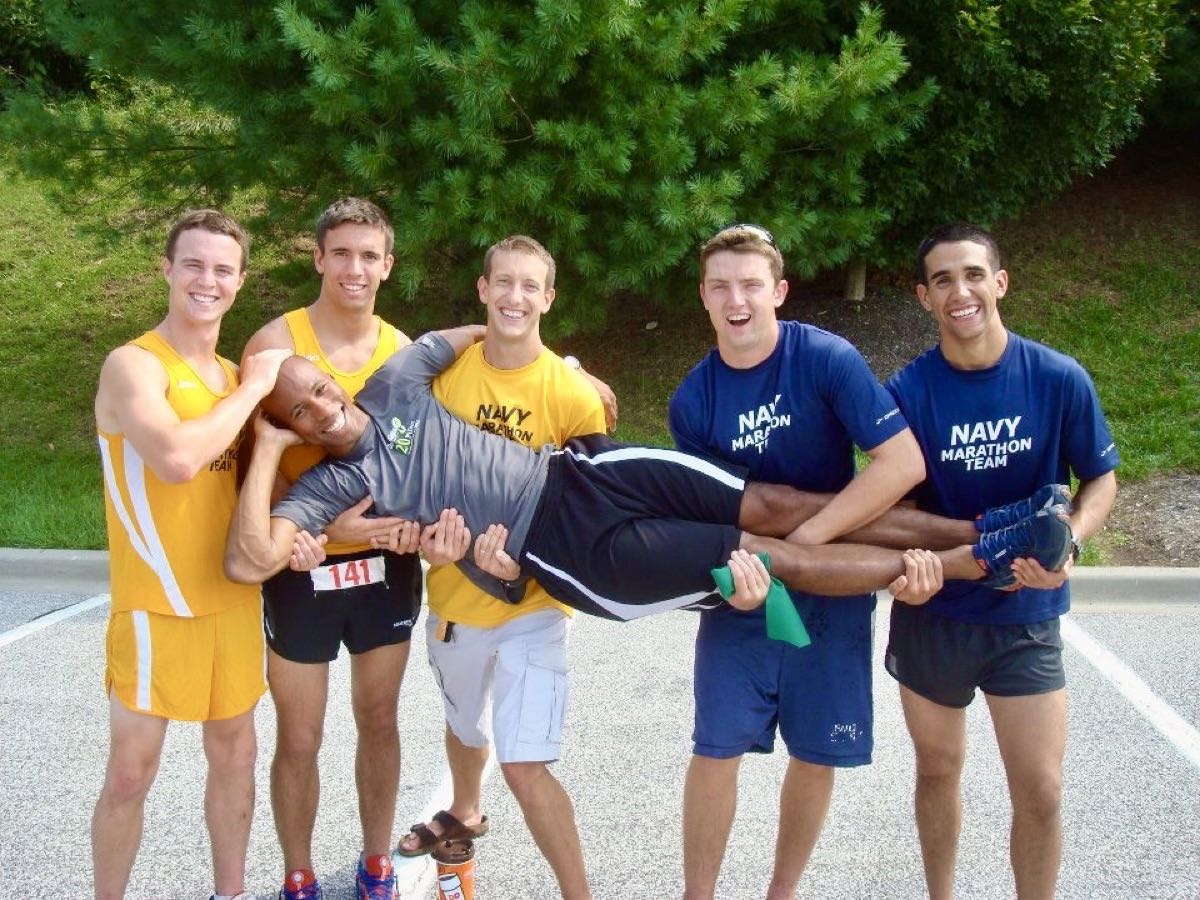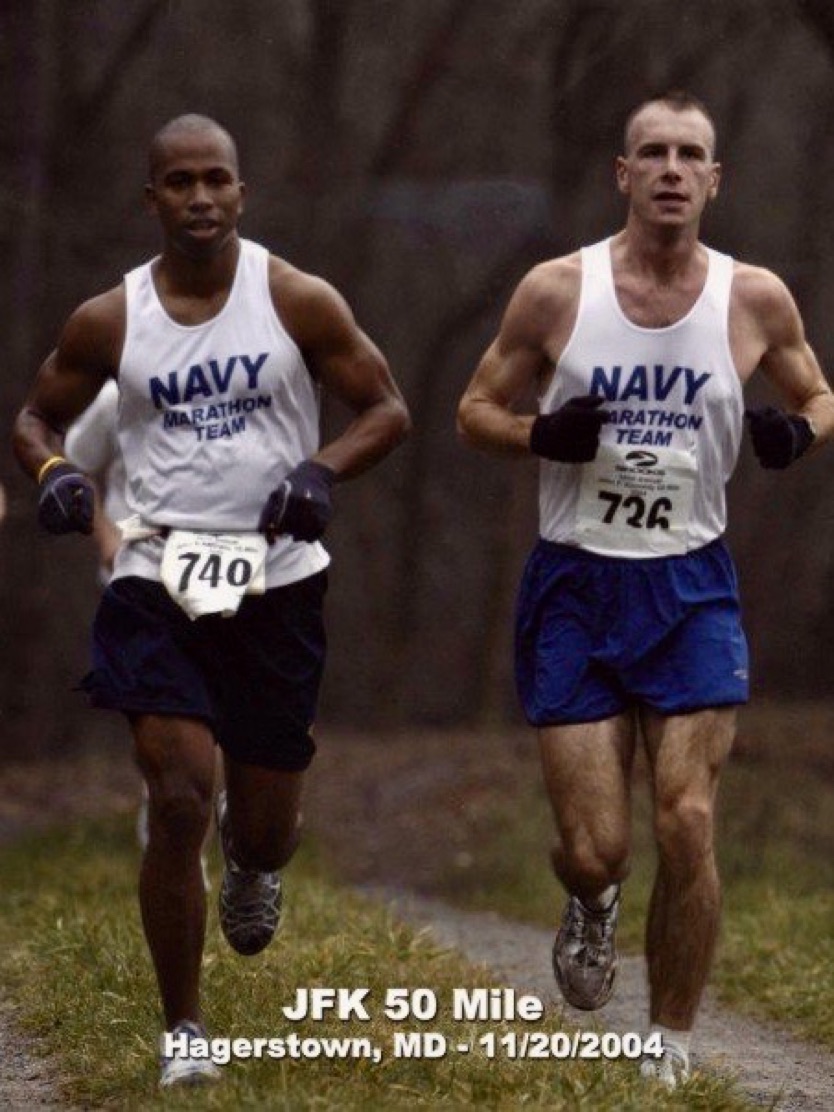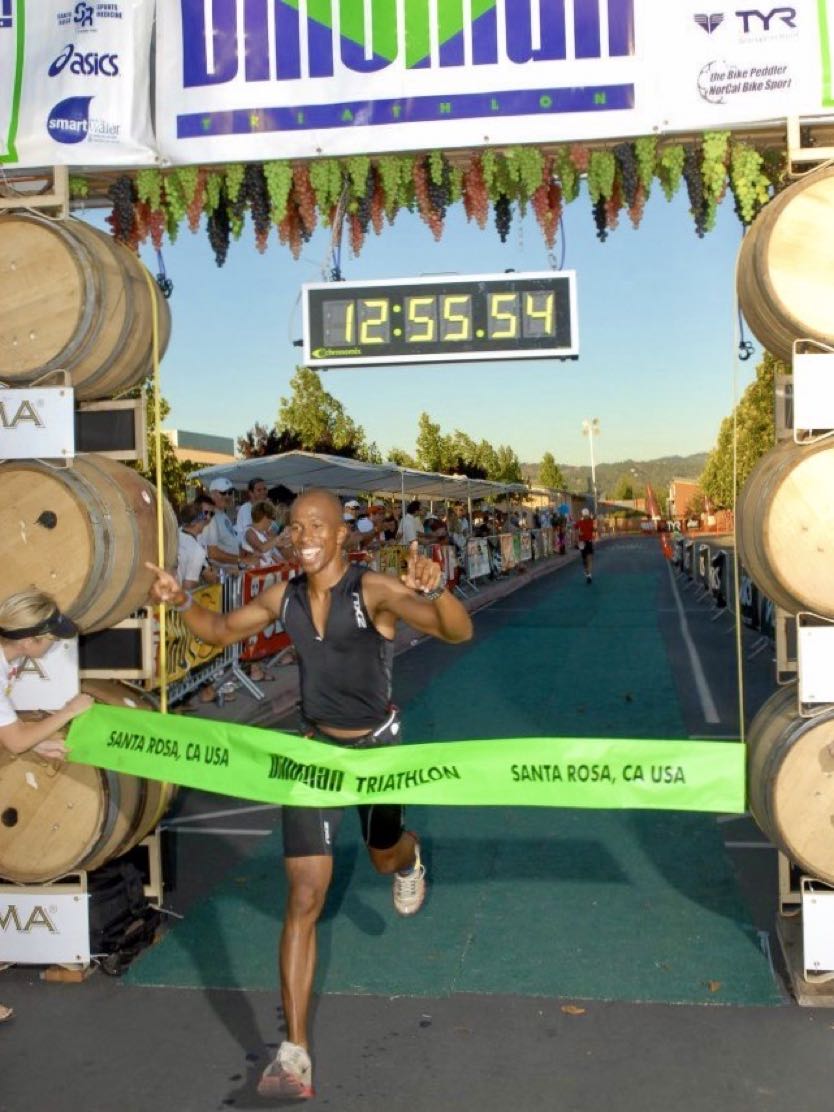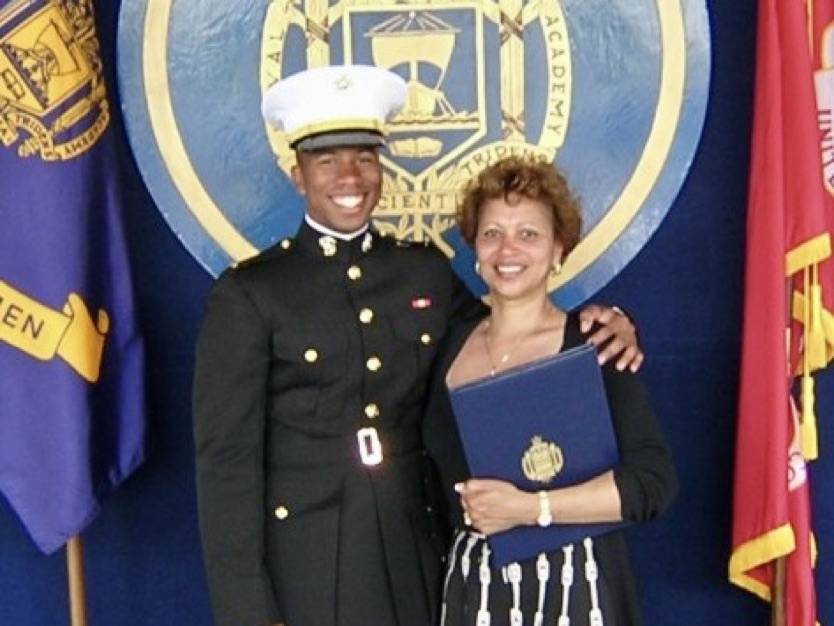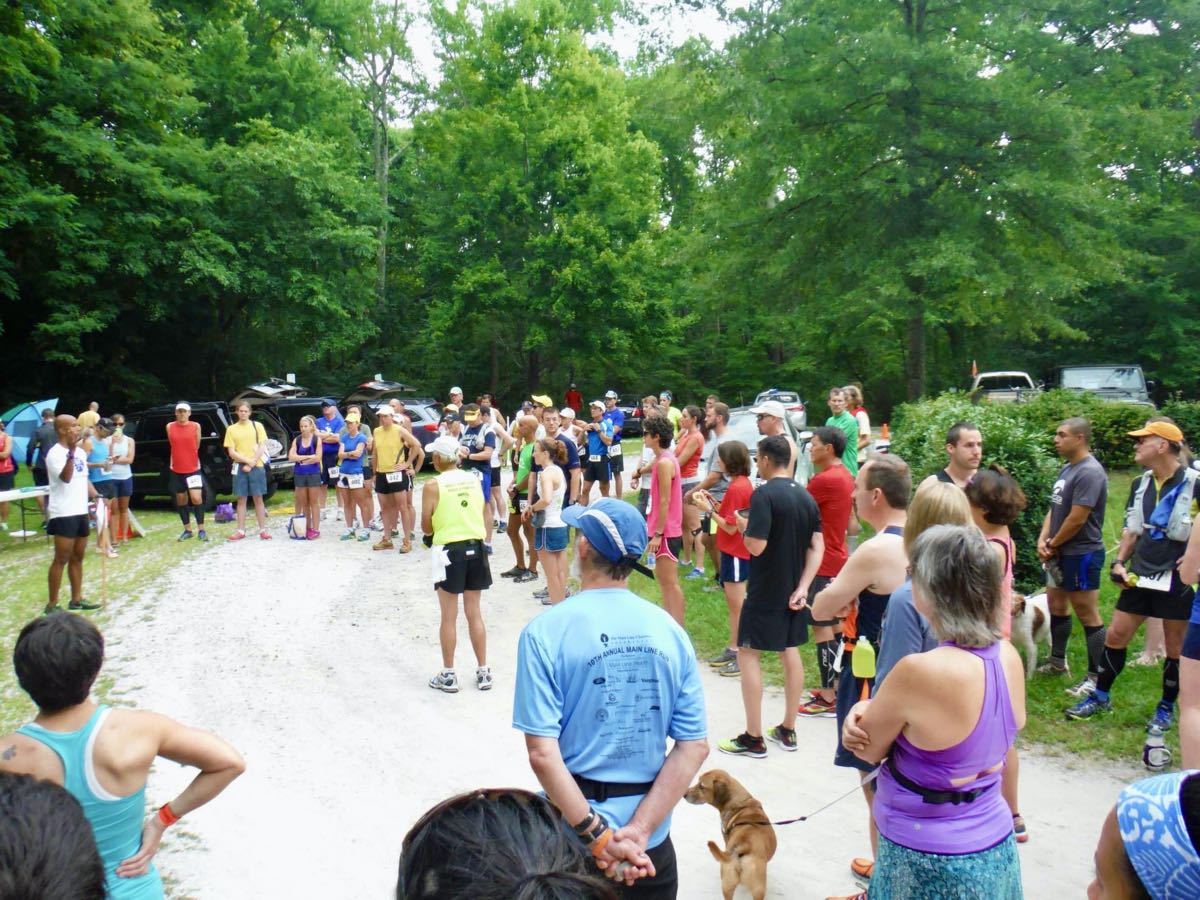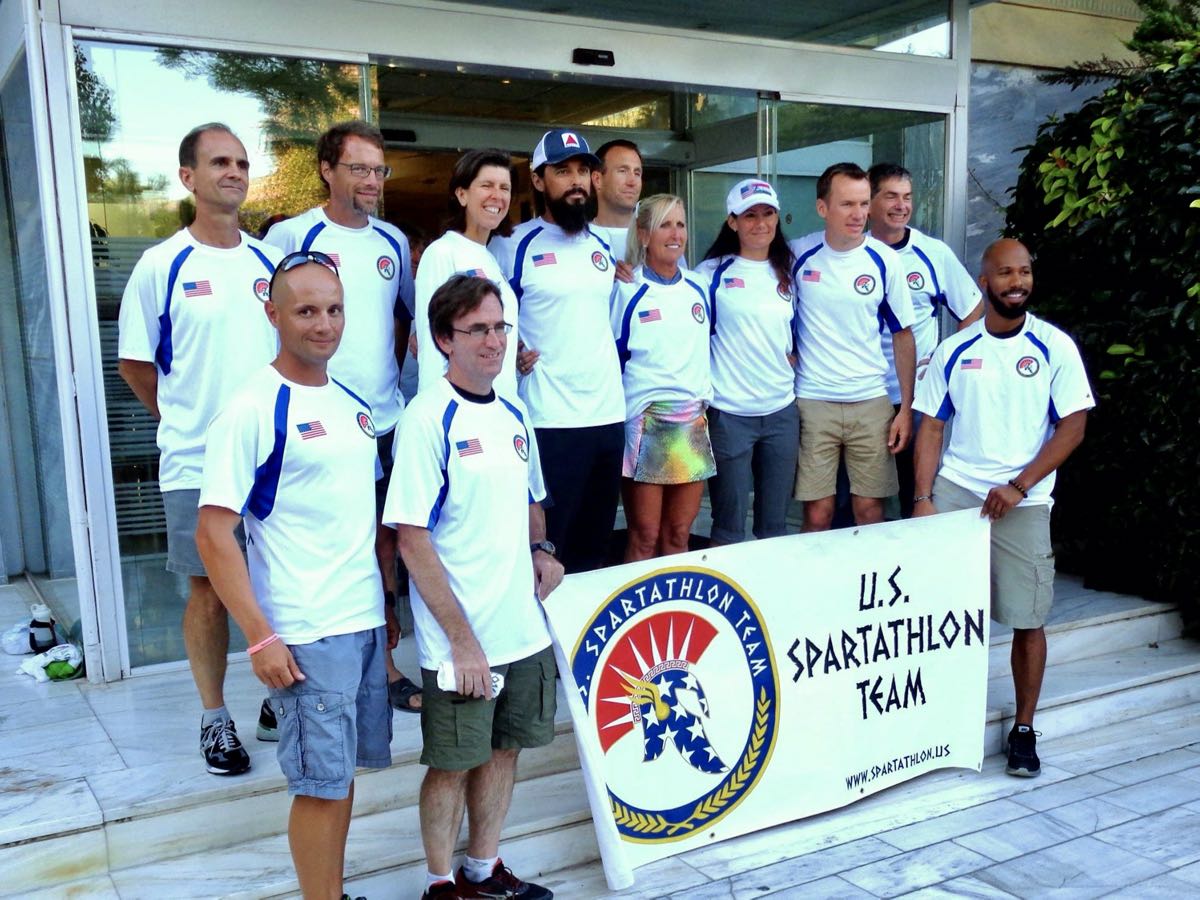United States Marine Corps veteran and ultrarunner Mosi Smith didn’t stop moving for 62 hours during the recent Diesel Day Grit Check, a mixed activity and last-person-standing backyard challenge. The event, which blended running and weightlifting (and was held under strict COVID-19 pandemic guidelines including pre- and post-race quarantine and social distancing during the event), was held in Nederland, Colorado, in June of 2020. Every hour, participants ran 2.5 miles and did a body-weight bench press.
Smith clocked 155 miles on foot, more than 100 bench-press repetitions, and was the last person standing. But the focus wasn’t competition. Smith and the other athletes gathered to challenge one another while raising funds for Big Fish, a nonprofit that connects veterans for support and accountability as they improve their psychological wellness and manage post-traumatic combat stress. Big Fish was launched in 2019, and Smith serves on the organization’s board.
Strong, humble, and community-serving efforts are not only in Smith’s wheelhouse, but they define him. Smith served and worked for the United States Naval Academy and United States Marine Corps for 13 years. All the while, he’s educated, coached, and mentored rising students. And, he’s simultaneously pursued and developed endurance events as an avenue to challenge himself while fundraising for veteran organizations. To date, he’s finished more than 60 endurance events including nearly twenty 100 milers. His goals, professionally and physically, consider long-term investment, impact, and benefits for communities and the environment.
The name Mosi is Swahili for “first born.” He also goes by the nickname Mos. Smith, 37, first realized his draw toward running as an eighth-grade football player in Atlanta, Georgia, where he grew up. “Back in 1996, I was a foot-and-a-half shorter, 50 pounds lighter, and had the same-size head,” Smith says, laughs, and continues, “I enjoyed football, but I wasn’t good at it. Every day in practice, we ran one mile in pads. My buddy and I, we’d both be running in the front of the pack. My coach came over to me and said, ‘You’re running track after this is over.’”
Sure enough, Smith joined track and field and had a rude awakening at that first practice. “My coach, Eddie Roberts, said, ‘You’re supposed to be distance runners, so run four miles.’ It was four times longer than the longest distance I’d run! I did it, it wasn’t pretty, and I was the last one. But that sparked something. I thought, I enjoy this. I feel good. I know I suck, but I can work on that,” remembers Smith. Cross country and track became mainstays for Smith in high school.
The Atlanta Track Club (ATC) was another huge piece of his youth running experience. The club hosted accessible, no-frills ($5 entry) races for all ages ranging from track meets to 5k’s to 15 miles throughout the Atlanta area. The ATC also organizes the Atlanta Marathon and Peachtree Road Race.
During those years, “Everyone ran together and there were overall and age-group awards for each race. I was running with adults, which was pretty formative. One of my best friends was Julio Moreno, and his father was Lucas Moreno, Sr. He and his friends were examples of lifelong athletes and helped us prepare for many of the ATC races. If it were not for his efforts, Coach Gary Bloodsaw’s nudging, and Coach Eddie Roberts’s tutelage, I would not be where I am today,” says Smith.
In 2001, Smith entered the United States Naval Academy in Annapolis, Maryland for his undergraduate degree. The USNA prepares students to become professional officers and leaders in the Navy or Marine Corps, where they serve at least five years after graduation.
Two years into his education, a group of Academy friends and Smith created a marathon team. The group became an officially recognized and funded club sport. “We trained and raced local events to build up toward one marathon each semester,” says Smith, who ran his first marathon at the 2002 Myrtle Beach Marathon.
“My first marathon time was under 3:10. I thought, Huh, there might be something to this. I did several more marathons during my time as a student at the Academy; I was blessed to do the Boston Marathon the next year.” Then, 2004 was Smith’s last season as a runner for the USNA Marathon Team. That year, one of Smith’s teammates, Brad Reed, said, “‘Mos, I have a graduation gift for you, so stay in shape after your marathon,’” remembers Smith.
Smith had no idea what the event could be but he kept fit. On November 20, 2004, he and his buddy woke up at 2 a.m. on a Saturday morning to drive to the start line of this still-unknown event. They were running the JFK 50 Mile. “I was like, Fam—Brad, this is twice as long as we normally run! And he said, ‘Just slow down and keep eating and drinking.’ It wasn’t pretty but it was pretty decent. I hurt in places I didn’t know I could hurt. But that experience sparked something for me,” says Smith. “It was formative in how it opened my eyes to a different expression of running and a new way to push myself while exploring different environments.”
After he graduated, Smith was in active duty with the United State Marine Corps. He trained and deployed with the Marines and became a Marine Corps officer, from 2005 to 2013. His service took him up and down the U.S. East Coast, to California, and overseas. He didn’t have enough time to pursue ultrarunning over the next four years. However, one of Smith’s platoon sergeants was a water-survival trainer and helped him hone his swimming skills. This supported Smith’s goal to complete the 2007 Ironman Vineman.
“That Ironman training taught me, if you train daily, you will get better. But you’ve got to put in the work. I call it ‘1,000 chisels.’ Working on a goal takes thousands of incremental moments of effort. You don’t do it all in one sitting. I could swim enough to pass my [Marine Corps] tests but couldn’t swim more than 1,000 meters without stopping when I started training for the Ironman. Fast forward two months later and I finished the Vineman,” says Smith.
After one of his final deployments, Smith’s calendar opened up. He trained for another ultramarathon, the 2008 Javelina Jundred. Then, his ultrarunning passion really took off and he competed in races regularly. In 2009, Smith also became the assistant coach to the USNA Marathon Team, a position he’d hold for four years.
During his years at the Academy, Smith had been introduced to the Semper Fi Fund. The nonprofit supports wounded veterans across all branches of the United States Armed Forces. Assistance ranges from transitional to financial, and from family support to integrative wellness. In 2010, Smith co-launched a long-term fundraising campaign with friend Robert Hillery, called the “1 in 10,” to donate $1 million to the organization through their endurance efforts. Each time they compete in an endurance event, they garner pledges of financial support for the Semper Fi Fund. Their two requests are that supporters pledge $0.25 for every mile the team completes that year, and to invite five more people to get involved with the campaign effort.
Last year, the duo reached a cumulative total of more than $48,000 raised to date. The last race that Smith used to push the campaign was the 2019 Badwater 135, where he placed 16th. “The Semper Fi Fund has helped a few of my Marines who have been hurt during deployments or everyday life,” says Smith.
In 2010, Smith developed an annual six-hour running event called Endless Summer, which is also a fundraiser for the Semper Fi Fund. At the time, Smith was working on his first master’s degree in leadership, education, and development at the University of Maryland. He was rooted in the Annapolis running community, and worked with the Annapolis Striders, a running club with 1,400 members. “There was a need for an ultramarathon for runners to dip their toes in. I started brainstorming ideas, and I had a capstone project due for graduate school, so I created this experience and tied it into school. It’s basically a fixed-time race. The course is a 4.37-mile loop and you can run as much or as little as you like in that six-hour window. It helps fundraise and it provides a way for people to make a foray into the ultrarunning community,” says Smith.
Tom DeKornfeld, a Navy veteran, was the co-race director the inaugural year. In the fall of 2012, John Hayward, who is also a Navy veteran, came aboard as a race director. And Steve Mitchell will take over the reins for both Smith and Hayward after 2020.
All while still in active duty, Smith finished his master’s degree in 2011 then worked at the USNA as a company officer, which helps guide students, known as midshipmen. Those students are separated into groups with two advisors, which include an officer and a senior. Smith worked with incoming midshipmen. “The job of the company officer and senior is to walk these midshipmen through their development cycle as freshmen. They don’t know much about the Academy and service, in general. I was blessed to be one of the company officers who helped those young folks. I was teaching in the leadership department during that time.”
After Smith left his position as an instructor and company officer, he did project management and logistics for the next four years.
In 2017, Smith moved to Grants Pass, Oregon, which is home today. He first ventured to the area when he raced the Eugene Marathon and thought, I’d like to live in Oregon one day. He moved to Oregon to work at ECS Composites, a fabrication company, as the Vice President of International Business Development. “I came out to do that work and to explore Oregon and see what it’s like living out here. Now, I want to focus more on school, but I’m still tethered to company but as an independent contractor,” says Smith.
He recently enrolled in the University of Oregon for his second master’s degree specializing in sustainable business practices. “Ideally, it’s about continuing professional growth and development,” Smith says about his future career goals. “I don’t want to feel like I’m going stagnant. We’re in a world where resources are finite. We need to be smart about the ways we use and reuse. There are ways that businesses can combine being good stewards of our environment and making a buck. I’d like to work for Nike, or a similar company, in the development and purpose side of the house,” says Smith.
His physical pursuits are motivated by the same focus on upward momentum. “For me, [racing and endurance events] have always been about trying to get better. At a certain age, I think that stops. I think I’m going through that point where I can eke out good performances, but I enjoy exploration more now—to touch some of these places that people don’t really go. I dig the training more, which is why if you roll onto my Strava, you’ll see I haven’t done any races but that I’ve been in the back woods of the Rogue River-Siskiyou National Forest,” says Smith.
Over the years, he’s also noticed that as a Black American he plays a special role in racial representation at endurance events. “As I’ve grown older, I’ve realized, Fam, there’s still not too many cats out there who look like you. I distinctly recall toeing the line in 2009 at the Grindstone 100 Mile and meeting one of my best friends, Kimani Long. It was simply for the fact that we were the two brothers there in the crowd. I got to run with him for a few miles that year and we were living in the same area, and I found a friend and partner in crime.”
“Part of me is like, Mos, you got to stay out there, because there’s probably some young person who’s looking out there and needs a real-life example that there are people in this space,” explains Smith. With the current racial and civil rights movement in the United States, “People are taking more explicit steps in showcasing people of color. Cool. Great. We’ve always been here,” says Smith.
As a Black American, endurance athlete, and veteran, Smith supports the uprise of United States citizens who are protesting for equity, equality, and an end to systemic racism nationwide. “Foremost, Black lives matter (too—for those who are hard of hearing in the back). I am for protests: peaceful, enduring, uncomfortable, and undeniable protests such as rallies, marches, vigils, picketing, and civil disobedience. I cannot condemn the human expression of a collective people that has endured systemic oppression for such a prolonged time period that destruction is viewed as the last option to being seen and heard. We can rebuild things but not people. I would be remiss in not acknowledging that some instances of these destructive expressions have been conducted by agent provocateurs. Historically, marching, sit-ins, demonstrations, and the like have had such a lukewarm acceptance in this country. Regardless of the form taken, most protests will be viewed with public disproval in the moment. The aim remains to push the conversation and affect fruitful dialogue toward reconciliation.”
“I love this country. Out of that same love, I can support challenges to the status quo—in light of the ever-growing collective evidence of police brutality and misconduct—and encourage fellow humans. As a former member of the Armed Forces, I want people to exercise these rights that I am supposed to go out and fight for. This is a period of reconciliation that I think is much needed: To address the inequities of systemic racism and treatment of people not only during the policing process, but ultimately from the first encounter and through to punitive actions and out of the judicial system. I am definitely all for it right now.”
As a Black man in the United States, Smith is aware of his presence in any environment. “From my grooming standards, to the manner of dress, to code switching, I have to be aware of how I curate aspects of myself to society. Yes, I have experienced racism. The majority of the time it has been far removed from the realm of sport and the running community,” he says. Usually, the racism he experiences is in daily life and outdoor settings in the form of microaggressions, biased presumptions or negative prejudicial slights that occur intentionally or unintentionally. Those microaggressions typically surface as assumptions about his capability and efficacy in the outdoors as being lesser. Sometimes, those assumptions surface at ultra events, too.
For instance, he recently ran up South Sister peak in Oregon and various people passing him on the trail said, “Oh, late start. You sure you have everything? You sure you know what you’re doing?” “I don’t want to be confrontational. But, there’s a piece of dialogue in the back of my head that questions, ‘Are they trying to be helpful?’ To which I think, Fam, I’ve been on more mountains by myself than you think. Instead, they could take the viewpoint of, ‘Great job,’ ‘Good to see you out there,’ or ‘You good? You need anything?’ But it’s often people are talking from a point of, ‘I don’t know if you’re good or not,’” explains Smith.
Also, as a Black man, he remains mindful to venture into the backcountry with an awareness of the people around him. “Living in southern Oregon, I can show you where the Confederate flags hang and some of the backcountry spaces people tend to frequent. Conversely, I can show you some allies in those same spaces,” he says.
As individuals, communities, businesses, and organizations search for ways to be inclusive, Smith has a few suggestions. First, individuals can reach out to and invite people who may not be familiar with the activities that they’re involved in. “I wasn’t raised doing any of this. It wasn’t until I had friends who invited me out to camp and hike that I was exposed to it, because that wasn’t in my family tree. That’s one easy piece,” he says. “My high-school friends—Julio, Steve Green, Chris Raymond, and Jeff Sellers—and I periodically took off to the North Georgia mountains, in the foothills of the Blue Ridge Mountains, and set up camp for the weekend. Those experiences were so far removed from the lifestyle of growing up in a major city. Later, in the Marine Corps, training and working in austere expeditionary environments undoubtedly resonated with me.”
Furthermore, media, brands, organizations, associations, clubs, and events can push stories, images, and marketing materials with people of color to the forefront. But don’t stop there, encourages Smith, those outdoor entities should also invite people of color to be representatives on boards. “There are people of color out there doing outdoor stuff—like Outdoor Afro—and if you want to be inclusive, incorporate those faces and voices into your boards to collaborate in what’s going on in local communities, because we’re all using these trails,” says Smith.
Ultimately, whether Smith is raising money for the veteran community, supporting or mentoring fellow service members, celebrating Black representation, or ultrarunning, he is always focused on helping others and setting a good example. Beyond his career and endurance focus, “There’s a wave of young men and women who are getting out of the service, and if I can be in a position to help them find their path, that is a main goal of mine,” he says.
Call for Comments
Leave a comment to share your story of running, adventuring, or racing with Mosi Smith!
